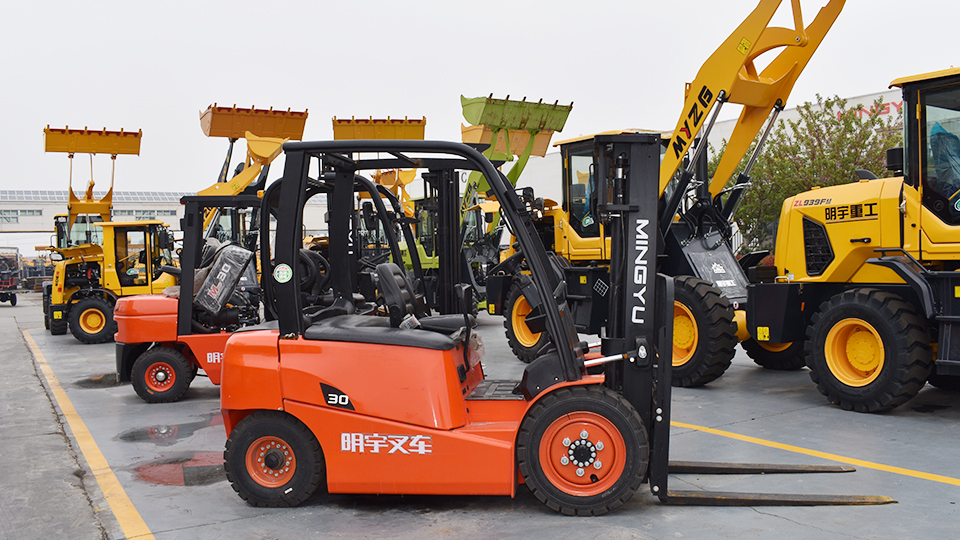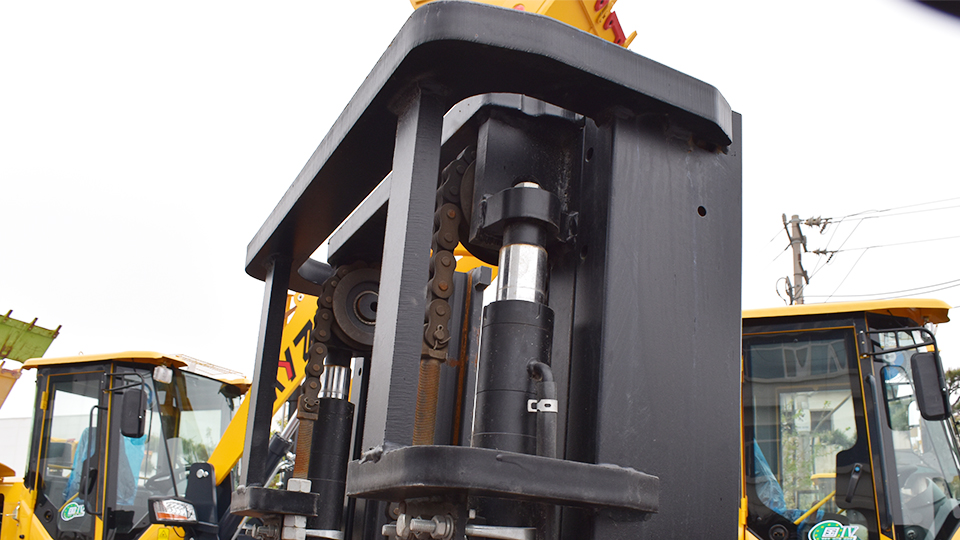
The hum of the electric forklift for sale, the smooth, quiet lifting action – electric forklifts are increasingly prevalent in warehouses, distribution centers, manufacturing facilities, and retail environments. Their efficiency, lower emissions, and reduced noise make them a preferred choice for indoor and some outdoor applications. However, operating an electric forklift is not simply a matter of hopping on and driving. It requires specific knowledge, skills, and, crucially, formal certification to ensure safety and compliance with regulations. This technical article provides a comprehensive guide on how to obtain an electric forklift certificate, outlining the essential steps, training requirements, and considerations involved.
Understanding the Necessity of Forklift Certification:
Before delving into the process, it's crucial to understand why forklift certification is mandatory. Several key reasons underscore its importance:
Safety: Forklifts, despite their seemingly simple operation, are powerful machines capable of causing serious accidents, injuries, and even fatalities if operated improperly. Certification ensures that operators are trained in safe operating procedures, hazard identification, and emergency response.
OSHA (Occupational Safety and Health Administration) Regulations: In the United States, OSHA mandates that all forklift operators be properly trained and certified to operate the specific type of forklift they will be using. Failure to comply with these regulations can result in significant fines and legal liabilities for employers. Similar regulatory bodies exist in other countries, emphasizing the global importance of operator certification.
Employer Requirements: Most reputable employers will not hire or allow individuals to operate crown electric forklift without valid certification. This protects their employees, their equipment, and their business from potential accidents and legal repercussions.
Increased Efficiency and Productivity: Properly trained operators are more likely to operate forklifts efficiently, reducing damage to goods, equipment, and the work environment. This translates to increased productivity and lower operational costs.
Insurance Requirements: Insurance companies often require forklift operators to be certified as a condition of coverage. Lack of certification can lead to denied claims in the event of an accident.

The Path to Electric Forklift Certification: A Step-by-Step Guide:
Obtaining an electric forklift certificate typically involves a structured process that combines theoretical knowledge with practical hands-on training. Here's a breakdown of the key steps:
1. Finding a Qualified Training Provider:
The first and most crucial step is to identify a reputable and OSHA-compliant (or equivalent regulatory body in your region) training provider. These providers can be:
Employer-Provided Training: Many companies offer in-house forklift training programs conducted by qualified trainers. This is often the most convenient and cost-effective option for employees. Ensure that the employer's training program meets all regulatory requirements.
Independent Training Schools: Numerous independent training schools specialize in forklift operation and safety. These schools often offer courses open to the public and can be a good option for individuals seeking certification before employment or for companies that don't have in-house training capabilities.
Equipment Dealers: Some forklift dealerships offer operator training programs as part of their services.
When choosing a training provider, consider the following factors:
Compliance: Ensure the training program meets all applicable OSHA or equivalent regulatory standards.
Instructor Qualifications: Verify that the instructors are experienced and certified to train forklift operators.
Curriculum: The training should cover both theoretical knowledge and practical hands-on operation specific to electric forklifts.
Equipment: The training provider should have well-maintained electric forklifts available for practical training.
Cost and Duration: Compare the costs and duration of different training programs.
Location and Schedule: Choose a provider that offers stand up stand up electric forklift and training schedules.
2. Completing the Theoretical Training:
The theoretical portion of the training typically covers essential knowledge related to safe forklift operation, including:
Types of Forklifts: Understanding the different classes of forklifts, including electric counterbalance forklifts, reach trucks, order pickers, and pallet jacks, and their specific operating characteristics.
Electric Forklift-Specific Considerations: Learning about the unique aspects of electric forklifts, such as battery care and charging procedures, electrical hazards, and regenerative braking systems.
Stability and Capacity: Understanding the principles of forklift stability, the load center, the capacity plate, and the dangers of overloading.
Pre-Shift Inspections: Learning how to conduct thorough pre-shift inspections of the electric forklift, identifying potential mechanical issues, and documenting the inspection.
Safe Operating Procedures: Covering topics such as proper starting and stopping, maneuvering in tight spaces, navigating ramps and inclines, pedestrian safety, and operating around obstacles.
Load Handling: Learning techniques for safely picking up, transporting, stacking, and unstacking various types of loads.
Fueling/Charging Procedures: Understanding the correct and safe procedures for charging or changing electric forklift batteries, including recognizing potential hazards like acid spills and electrical shorts.
Workplace Hazards: Identifying common workplace hazards and implementing strategies to mitigate risks.
Relevant Regulations: Understanding the applicable OSHA or equivalent safety regulations and standards.
Emergency Procedures: Knowing how to respond in case of accidents, equipment malfunctions, or other emergencies.
This theoretical training is often delivered through lectures, videos, written materials, and interactive discussions. Trainees may be required to pass a written exam to demonstrate their understanding of the material.
3. Participating in Hands-On Practical Training:
The practical portion of the training is where trainees gain hands-on experience operating electric forklifts under the supervision of a qualified instructor. This typically involves:
Pre-Shift Inspection Practice: Performing actual pre-shift inspections on electric forklifts.

Basic Controls Operation: Familiarizing oneself with the location and function of all controls, including steering, acceleration, braking, lifting, tilting, and auxiliary functions.
Maneuvering Skills: Practicing basic maneuvers such as driving forward and backward, turning, navigating through obstacles, and operating in confined spaces.
Load Handling Exercises: Practicing picking up, transporting, stacking, and unstacking loads of varying sizes and weights safely and efficiently.
Battery Handling (if applicable): Learning the safe procedures for connecting, disconnecting, and potentially changing forklift batteries.
Operating on Ramps and Inclines: Practicing safe operation on different gradients.
Emergency Stop Procedures: Learning how to safely and effectively use the emergency stop mechanism.
The instructor will provide guidance, feedback, and corrections as the trainee develops their operating skills.
4. Completing the Skills Evaluation:
Once the theoretical and practical training is complete, trainees must undergo a skills evaluation to demonstrate their competency in operating an electric forklift safely and proficiently. This evaluation typically involves:
Pre-Shift Inspection Demonstration: Performing a pre-shift inspection and identifying potential issues.
Obstacle Course Navigation: Safely maneuvering the forklift through a designated course with obstacles.
Load Handling Tasks: Picking up, transporting, stacking, and unstacking loads according to specific instructions.
Safe Operating Practices: Demonstrating adherence to safe operating procedures throughout the evaluation.
The evaluator will assess the trainee's ability to operate the forklift smoothly, safely, and efficiently. Successful completion of the skills evaluation is a prerequisite for certification.
5. Receiving Your Electric Forklift Certificate:
Upon successfully completing both the theoretical and practical training and passing the skills evaluation, the training provider will issue an electric forklift certificate. This certificate typically includes:
Operator's Name:
Date of Training and Certification:
Type of Forklift Trained On (specifically electric forklifts):
Name and Signature of the Trainer/Training Provider:
Expiration Date (typically every three years):
It is crucial to keep this certificate readily available as proof of your qualification to operate electric forklifts. Employers will often require a copy for their records.
6. Employer-Specific Training and Site Familiarization:
While a general electric forklift certificate demonstrates fundamental operating skills, OSHA also requires site-specific and equipment-specific training. Employers are responsible for ensuring that operators are familiar with:
Workplace Conditions: Potential hazards, traffic patterns, pedestrian walkways, and other site-specific factors.
Specific Electric Forklift Models Used: Any unique operating characteristics or attachments of the specific electric forklifts they will be using.
Company Policies and Procedures: Internal safety regulations and operating procedures.
This employer-provided training often involves on-the-job familiarization and may include additional assessments.
7. Renewal and Refresher Training:
Forklift certifications typically have an expiration date, usually every three years. To maintain certification, operators must undergo refresher training and a re-evaluation. Refresher training is also required if an operator is observed operating the forklift unsafely, is involved in an accident, or if there are changes in workplace conditions or the type of equipment used.
Key Considerations for Electric Forklift Certification:
Specificity: Ensure your training and certification are specifically for electric forklifts. Operating other types of forklifts (e.g., internal combustion) requires separate certification.
Thoroughness: Don't settle for rushed or inadequate training. A comprehensive program is essential for safety and compliance.
Active Participation: Engage actively in the training, ask questions, and practice diligently during the hands-on sessions.
Continuous Learning: Stay updated on best practices and any changes in regulations.
Responsibility: Ultimately, the responsibility for operating a forklift safely lies with the operator. Certification is a foundation, but ongoing vigilance and adherence to safety procedures are paramount.
Conclusion:
Obtaining an electric forklift certificate is a critical step towards becoming a qualified and safe operator of these increasingly common material handling machines. By following a structured approach that includes finding a reputable training provider, completing thorough theoretical and practical training, passing the skills evaluation, and understanding employer-specific requirements, individuals can gain the necessary credentials to operate electric forklifts legally and responsibly. Remember that certification is not a one-time event but an ongoing commitment to safety and continuous learning. By prioritizing proper training and adhering to safe operating practices, both operators and employers can contribute to a safer and more productive work environment.
Name: selena
Mobile:+86-13176910558
Tel:+86-0535-2090977
Whatsapp:8613181602336
Email:vip@mingyuforklift.com
Add:Xiaqiu Town, Laizhou, Yantai City, Shandong Province, China